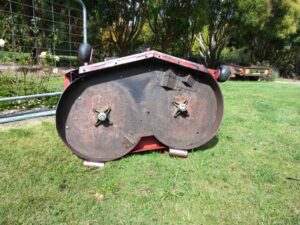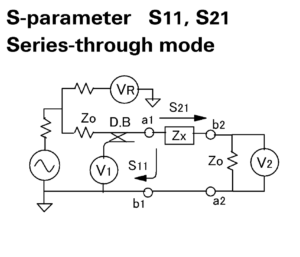The deck is a fabricated deck on a Toro MX 4250 residential zero turn mower, it has 200h of service over 8 years… which is not very much.
The deck has the recycler option installed.
Deck service included:
- Fit new bearings to spindles;
- Replace both idler wheels (components are not serviceable);
- Clean and apply corrosion protection under deck;
- Procure, fit and balance new blades; and
- Procure spare drive and deck belts for spares.
Spindle bearings
Jiggling the blade tips showed 2-3mm vertical play in both spindles. New bearings have much less play, undetectable without instruments.
The spindles are easily serviced.
The lower bearing is one spindle had a rusted retainer / separator and collapsed when driving it from the housing. The other lower bearing was rough, but did not collapse. The top bearings were in good condition.
A set of four NSK 6203-2RS bearings was purchased ($35) to replace all the bearings.
Idler pulleys
Both idler pulleys were dry of grease. It was possible to pop the rubber seal and pack a little more grease pending arrival of replacement parts.
Replacement parts were purchased for $60 (inc shipping) and fitted.
The message is that water sprayed over the top of the deck assembly is retained in a shallow cup on the sealed bearings and some will wind up inside the bearings… don’t wash the top of the deck.
Deck clean, descale and corrosion protection

Above, the underside of the deck after washing, de-scaling with a pneumatic needle scaler, power brushing with a cup brush, and another high pressure wash ready for application of corrosion protection. Continue reading Mower deck maintenance – Toro MX 4250
Last update: 21st April, 2023, 10:49 AM








